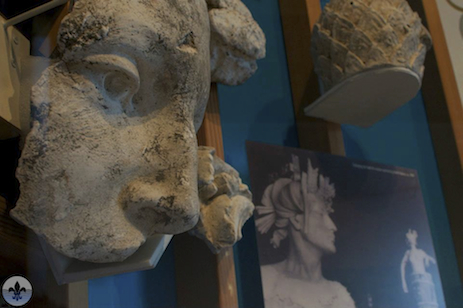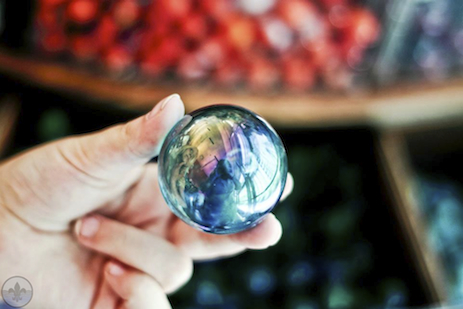photograph by Steven Ley
In the twilight of April 30, 1904, thousands of electric lights flickered on to illuminate the sprawling campus of the Louisiana Purchase Exposition. Passing through the main entrance at Lindell Boulevard, the cacophony from the crowd must have seemed enormous. During the seven-month run, the 1904 World’s Fair in St. Louis welcomed over 19 million visitors from around the world, and was the second largest World’s Fair ever in acreage (Expo 2010 in Shanghai surpassed it). The success of the Event was both literal and figurative for the city. Recent to that year, Chicago had emerged as the Midwest’s foremost commercial and transportation center (thanks in large part to New York’s interest in routing the Transcontinental Railroad through the Great Lakes region), and had overtaken St. Louis in population at least two decades earlier. St. Louis had even lost the bid to host the Columbian Exposition to Chicago ten years earlier. Therefore, the 1904 Fair in Forest Park needed to be spectacular in order to signify St. Louis’ place in the Nation as a cultural and economic power. Many City residents worked feverishly to ensure a grand showing, which it truly was. However, the success was only partial to the sum of the aim.
photograph by Steph James
photograph by Kieara Crisp
photograph by Jason Gray
photograph by Jeni Kulka
Although the effect of the Louisiana Purchase Exposition was not necessarily a renewed interest in local investment by out-of-towners (the Fair did not result in significant population growth nor any lasting new commerce), it was a source of immense pride locally and continues to be so. For this reason, St. Louisans voted to preserve what they could of the Fair, including the Palace of Fine Arts Building (now the Saint Louis Art Museum), The Aviary (now a cornerstone of the St. Louis Zoo), and the statue, The Apotheosis of St. Louis (which was cast in bronze and gifted to the City). Considered to be the last of the Victorian-era expositions, the 1904 Event was the first to produce a profit, and of this profit (about $600,000), the Louisiana Purchase Exposition Company designed and built the Jefferson Memorial Building nearby the former main entrance to the Fair. The Building, which also commemorates the 1803 Louisiana Purchase, is the first Memorial to honor Thomas Jefferson (the President who oversaw the Purchase) and contains the first statue sculpted in his likeness.
photograph by Steven Ley
photograph by Kieara Crisp
photograph by Jason Gray
photograph by Dan Henrichs Photography, St. Louis
Shortly thereafter, the Missouri Historical Society, which was established in 1866 for “the purpose of saving from oblivion, the early history of the city and state”, moved to the Memorial, and absorbed the archives of the Louisiana Purchase Exposition Company into its collection. Today, that Society operates the excellent Missouri History Museum (located in part within the Jefferson Memorial Building) and the Library and Research Center (on Skinker Boulevard outside Forest Park). Permanent exhibits to the Museum feature artifacts ranging from before St. Louis’ founding to contemporary day. Objects of national significance are also on display. The Emerson Center, a major expansion effort which opened in 2000, contains the Museum’s gift shop, auditorium, and fabulous restaurant, Bixby’s.
In 2001, the Missouri History Museum adopted a new mission:
The Missouri History Museum seeks to deepen the understanding of past choices, present circumstances, and future possibilities; strengthen the bonds of the community; and facilitate solutions to common problems.
Included in this are six core values; Civil Society, Empathy, Inspiration, Integrity, Remembrance, and Stewardship. The Museum is nationally accredited and has received much recognition for its cultural impact. Admission to the Missouri History Museum and the Library and Research Center is free and open to the public.
photograph by Jeni Kulka
photograph by Mandi Gray
photograph by Steven Ley
photograph by Theresa Harter
As the impression left by the Louisiana Purchase Exposition continues to compel St. Louis residents to wax poetic about “a time when”, possibly the Fair’s greatest mark is made with the Museum which now occupies a portion of its former grounds. For it is in this institution that the future great achievements of St. Louis shall be cultivated and preserved (alongside its past legacies); a profound example of foresight informed by hindsight, and an important source of inspiration for those writing now upon the blank pages of St. Louis’ ever-unfolding narrative.
photograph by Jason Gray
photograph by Jeni Kulka
photograph by Steven Ley
photograph by Dan Henrichs Photography, St. Louis
photograph by Mandi Gray
photograph by Patrick Gioia
photograph by Jeni Kulka




























Nice writing! I actually managed to read it without getting bored (I loose interest really fast with history overviews)
[…] 16th, stl250 invited St. Louis residents and visitors to attend a fun and upbeat event at the Missouri History Museum that honored St. Louis’ 250th anniversary with food, music and performances that reflected our […]